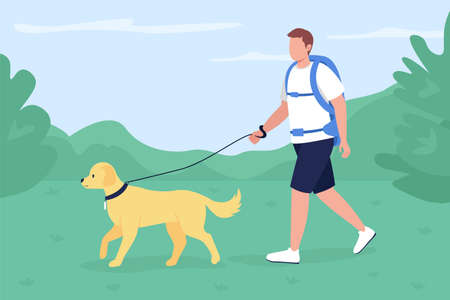Understanding Your Pet’s Temperament
Before you can motivate your small pet to get moving, it’s important to first understand why they might be less active. Every pet has its own unique temperament, and a laid-back attitude isn’t always just about laziness. For example, certain breeds of small animals—like some rabbit or guinea pig breeds—are naturally more mellow than others. Age is another major factor; older pets often slow down as part of the aging process, while younger ones may have bursts of energy but also require plenty of rest. Health issues can also play a significant role in your pet’s activity level. Sometimes, what seems like laziness is actually a sign that your furry friend isn’t feeling their best. Keeping an eye on their behavior and consulting with a vet if you notice changes can help rule out any medical concerns. By observing and understanding these aspects of your pet’s personality and health, you’ll be better equipped to encourage safe and healthy exercise routines that suit their individual needs.
Creating a Stimulating Environment
When it comes to motivating a lazy small pet, your first step should be setting up an environment that sparks their natural curiosity and encourages movement. Small animals like hamsters, guinea pigs, or rabbits thrive in habitats that offer both comfort and opportunity for activity. Here are some practical tips for turning your pet’s space into a mini playground:
Choose the Right Accessories
Providing a range of safe toys and interactive accessories is essential. Not every toy will capture your pet’s interest, so it’s important to experiment with different textures, shapes, and functions. Below is a table of popular enrichment items suitable for common small pets:
| Pet Type | Recommended Accessories | Purpose |
|---|---|---|
| Hamster | Exercise wheel, tunnels, chew sticks | Cardio, exploration, dental health |
| Guinea Pig | Hideouts, ramps, foraging mats | Security, climbing, mental stimulation |
| Rabbit | Tunnels, cardboard boxes, dig boxes | Exploration, shelter, natural digging behavior |
Create Zones for Different Activities
Small pets benefit from environments that have distinct areas for sleeping, eating, and playing. By organizing their living space into zones—like a cozy corner with bedding for rest and a separate area filled with tunnels or climbing structures—you encourage them to move between activities throughout the day.
Rotate and Refresh Toys Regularly
Just like us, pets can get bored with the same setup. Switching out toys every week or rearranging tunnels can reignite their curiosity. Introducing new scents (like hay or safe herbs) or hiding treats in different spots also adds an extra layer of challenge and excitement.
Safety First!
No matter what accessories you use, always ensure they are made from non-toxic materials and are appropriate for your pet’s size. Remove any broken or worn-out items promptly to prevent injuries.

3. Building a Fun Exercise Routine
Creating a daily exercise routine for your small pet doesn’t have to be complicated—just a little creativity and consistency go a long way. Here’s a step-by-step approach to getting even the laziest of furry friends moving, with tips tailored for different types of small pets.
Step 1: Observe and Adapt
Start by watching your pet’s natural habits. Is your hamster most active at night? Does your bunny perk up after breakfast? Use these cues to schedule playtime when they’re naturally more energetic. Forcing activity when they’re sleepy will only make them more resistant.
Step 2: Mix Up the Environment
Diversify their space to spark curiosity. For guinea pigs, rearrange tunnels or hide treats in new places. Hamsters love running wheels and climbing tubes; just switch things up occasionally to keep it fresh. Rabbits can benefit from cardboard castles or safe chew toys sprinkled around their play area.
Step 3: Gentle Play Sessions
Keep sessions short and sweet at first—5 to 10 minutes is enough for most small pets. Gradually add time as they get more comfortable. Try rolling a small ball for your ferret, encouraging your rat to climb ramps, or enticing your mouse with a feather wand.
Tailoring Play for Different Pets
Hamsters: Offer exercise balls, climbing ladders, and different textured tunnels.
Guinea Pigs: Set up “piggy parks” with paper bags, cardboard mazes, and lots of hidey holes.
Bunnies: Create obstacle courses using cushions or boxes and encourage gentle hopping.
Ferrets & Rats: Use rope bridges, hanging toys, and treasure hunts with treats hidden inside puzzle feeders.
Make It Routine
The key is consistency—try exercising your pet at the same time each day so it becomes something they expect and enjoy. Reward them with gentle praise or a favorite treat after each session to build positive associations with exercise.
4. Using Treats and Rewards Strategically
One of the most effective ways to encourage a lazy small pet to exercise is through the smart use of treats and positive reinforcement. Pets, like people, are motivated by rewards—especially if those rewards are both tasty and healthy. By making exercise a fun and rewarding experience, you can help your small pet associate movement with positivity and excitement.
Choosing Healthy Treats
It’s important to select treats that not only appeal to your pet but also contribute to their overall well-being. Here are some popular options for different types of small pets:
| Pet Type | Healthy Treat Ideas |
|---|---|
| Rabbits/Guinea Pigs | Small pieces of carrot, apple (no seeds), or leafy greens |
| Hamsters/Gerbils | Sunflower seeds (in moderation), unsweetened cereal bits, tiny fruit pieces |
| Ferrets | Freeze-dried meat treats, small bits of cooked egg |
| Small Birds | Millet spray, diced berries, whole grain bread bits |
Timing and Consistency Matter
The key to effective positive reinforcement is timing. Reward your pet immediately after they complete an activity or show interest in exercising. This helps them connect the action with the treat. Be consistent—offer praise along with the treat every time they participate in active play or finish a small obstacle course.
Sample Positive Reinforcement Routine:
- Encourage your pet onto an exercise wheel or through a tunnel.
- Praise them enthusiastically as they try new activities.
- Offer a small, healthy treat immediately after completion.
- Gradually increase the challenge as your pet grows more confident.
Pro Tip:
If your pet is especially food-motivated, consider using part of their daily food ration as exercise rewards. This helps avoid overfeeding while still making activity rewarding.
By strategically using treats and positive reinforcement, you turn exercise into something your small pet looks forward to. Over time, these training sessions become a source of joy and bonding for both you and your furry (or feathered) friend.
5. Staying Consistent and Patient
Encouraging a lazy small pet to exercise isn’t a one-and-done effort—it’s all about building habits over time. Consistency is key when you’re helping your pet adjust to a more active lifestyle. Try to set aside specific times each day for play or exercise, whether it’s before breakfast or after dinner. Small pets thrive on routine, and regular activity sessions will help them know what to expect and look forward to.
Tracking your pet’s progress can also make a real difference. You might keep a simple log of how long your pet is active each day or jot down any new activities they seem to enjoy. Over time, you’ll start to see patterns—maybe your hamster runs more at night, or your rabbit prefers a certain toy. These notes will help you tailor exercise sessions to your pet’s preferences and energy levels.
Above all, remember that patience is essential. Every pet adapts at their own pace, and some may take weeks or even months before they really get into the groove of regular activity. Celebrate small victories: maybe your guinea pig tried a new tunnel today, or your ferret chased their ball a little longer than usual. Stay positive and encouraging, avoid scolding or forcing participation, and trust that with consistent effort, your pet will gradually become more active and engaged.
6. Knowing When to Seek Professional Advice
Sometimes, even with your best efforts, your small pet just isnt interested in moving around much. While a laid-back personality is normal for some animals, its important to recognize when low activity could signal something more serious. Here’s how you can tell when it’s time to call your vet.
Recognizing Concerning Signs
If your pet suddenly becomes less active than usual, stops eating or drinking, seems lethargic, or has changes in their bathroom habits, these could be signs of an underlying health issue rather than just laziness. Watch out for labored breathing, unusual lumps, limping, or any signs of pain when they move. These symptoms should never be ignored.
Knowing Your Pet’s Normal Behavior
Every animal has its own unique personality and energy level. Some small pets are naturally less active, but if you notice a dramatic shift in behavior—like sleeping way more than usual or hiding for long periods—it’s worth paying closer attention. Keep track of their eating habits, grooming routines, and interactions with you as a baseline for what’s normal.
Consulting Your Veterinarian
If you’re unsure whether your pet’s inactivity is normal or something to worry about, don’t hesitate to reach out to your vet. A quick phone call can help determine if you need to bring your pet in for an exam. Be prepared to share details about their recent behavior changes, eating habits, and any other symptoms youve noticed. Your vet may suggest blood tests or a physical exam to rule out common problems in small pets like dental disease, obesity-related issues, or infections.
Ultimately, being proactive and observant can make all the difference in your pet’s health and happiness. If in doubt, always err on the side of caution—your veterinarian is there to help both you and your furry friend live your best lives together.


